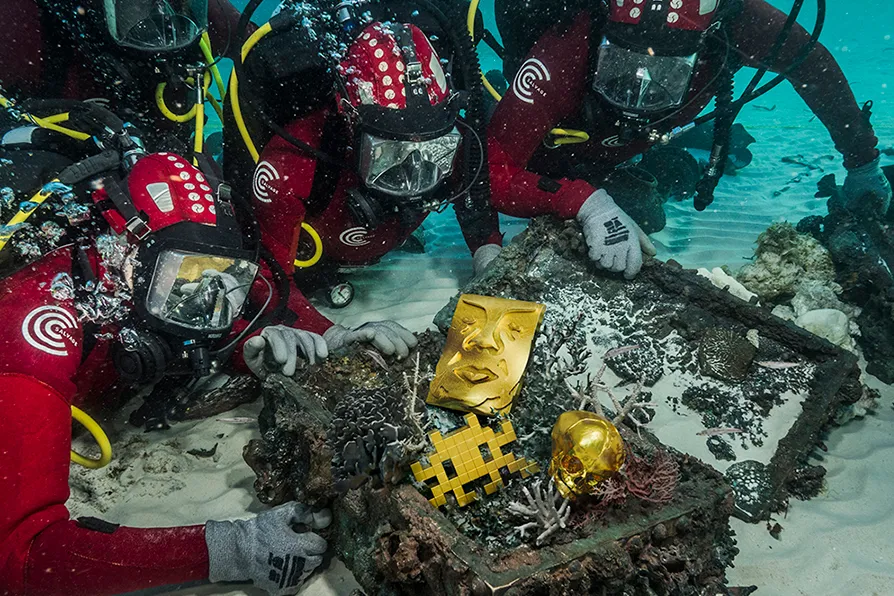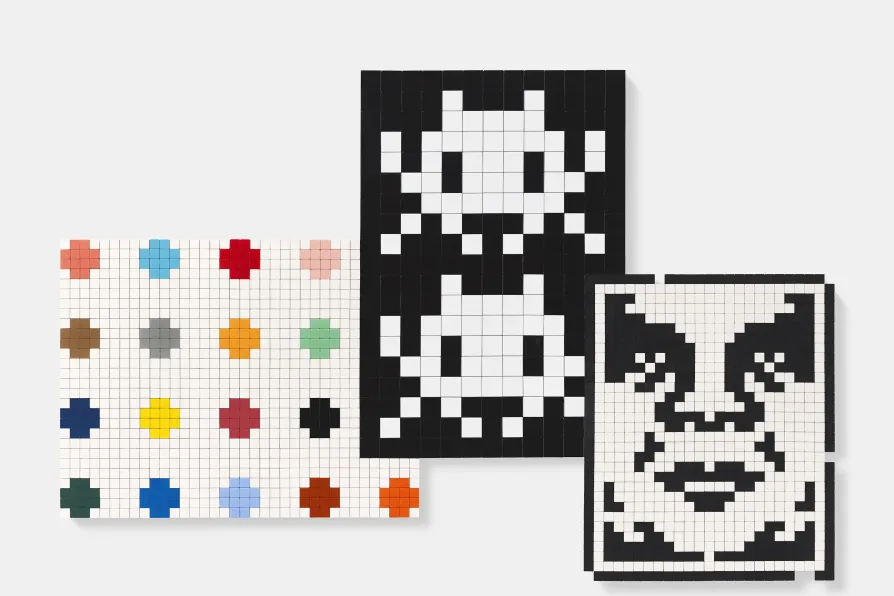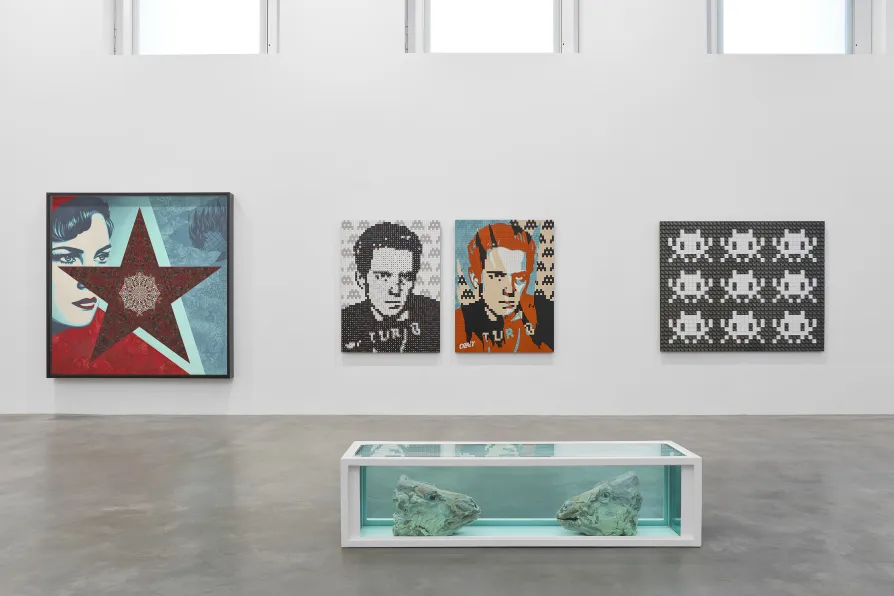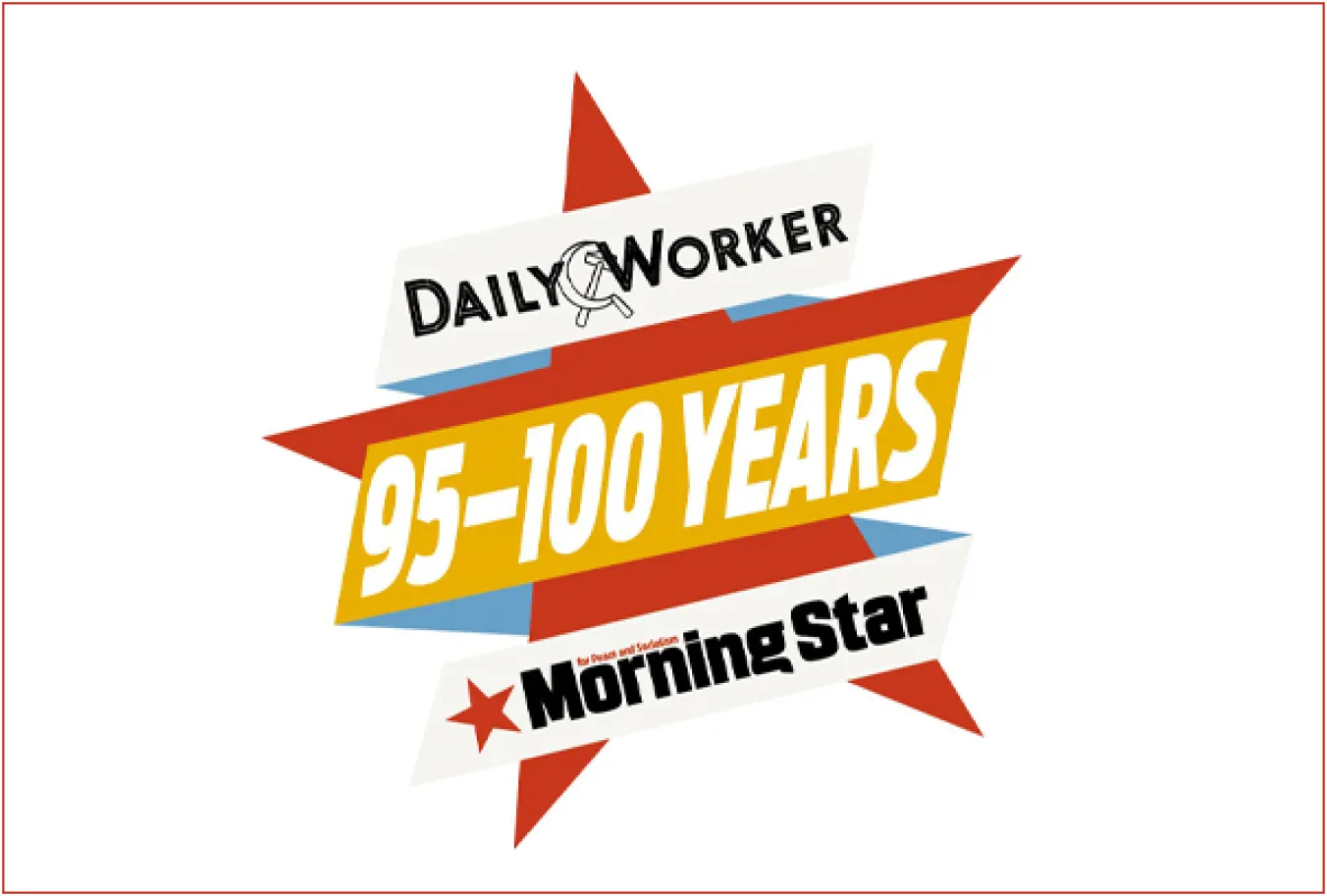JOE GILL speaks to the Palestinian students in Gaza whose testimony is collected in a remarkable anthology
SIMON DUFF relishes the cross contamination of Damien Hirst’s greatest hits by street artists from France and the US

 OPPORTUNISTIC: Damien Hirst/Invader/Shepard Fairey, Three Divers Discovering Gold, 2025 [Pic: Prudence Cuming Associates Ltd]
OPPORTUNISTIC: Damien Hirst/Invader/Shepard Fairey, Three Divers Discovering Gold, 2025 [Pic: Prudence Cuming Associates Ltd]
Damien Hirst, Invader, Shepard Fairey: Triple Trouble
Newport Street Gallery, London
★★★★★
NEWPORT STREET GALLERY lies at the heart of South London’s Vauxhall district. This former Victorian workshop is now Damien Hirst’s London showpiece. Designed by Caruso St John Architects, it’s set over two floors with six main gallery spaces. Opening in 2015, the design is bold, well thought out and influenced in part by Manchester’s Hacienda club, run by Factory Records in the ’80s and ’90s. It won the 2016 RIBA Stirling Prize.
Hirst shows not only his own work, but also his extensive collection of works by other artists, and the current show is a three artist set-up by Fairey, Hirst, and Invader that reflects the trio’s admiration of punk, and past and present art theory. Painting, sculpture, installation, and mosaic are all in evidence, and the whole aims to explore the intersections of contemporary art, street culture, and pop iconography. While they share a fascination with the repetition of symbols, some works defy categorisation.
Hirst needs little introduction. Invader is a French street artist whose designs comprise pixelated characters and structural works assembled from Rubik’s Cubes. Describing himself as an “Unidentified Free Artist” he chooses to hide his identity behind masks, reflecting an artistic practice that seeks to invade spaces, often illegally, with viral art.
Shepard Fairey, on the other hand, is a contemporary US street artist, graphic designer, and activist.

Speaking ahead of the opening, Hirst summed up his view to the collaboration: “What I’ve really enjoyed is the powerful sensibility of both these guys, and it pushes me to think more, down to millimetres and distances between things and colours, and there’s lots and lots of surprises. I think there’s excitement in the differences and in the similarities.
“I think anything done well is great art. It’s art if you do something well, to such an extreme. We all love punk. I just wanted to change people’s minds, I didn’t even care what into.”
In Gallery One visitors are treated to a veritable onslaught of ideas. A central theme for Hirst has often been to explore and debate notions of mortality and death aimed at confronting the viewer head on, and here Hirst does not let up.
Perhaps most striking is Schizophrenogenesis (2008) by Hirst featuring two cows’ heads set in a formaldehyde tank, modestly placed on the floor. In the same room an oversized painted fibreglass ashtray called The Forgotten Dead (1997) full of old cigarette butts and discarded packets.
Equally powerful an almost life-size photo of Sid Vicious, festooned in blood and deep cuts, playing bass for the Sex Pistols shortly before his death. Another work by Hirst is Lie to Me (2008): a medical cabinet, neatly presented in nickel and stainless steel, whose contents including medical instruments and a foetal specimen in formaldehyde.
Credit is given, and respect is paid to Marcel Duchamp’s readymade aesthetic, Max Ernst’s Surrealism, Francis Bacon’s meat paintings and Warhol’s Pop Art colour sensibility, setting the scene for the rest of the exhibition.

In Gallery Two, where a small diamond skull by Hirst entitled For Heaven’s Sake (2008) neatly occupies the centre of the room, Fairey has taken the chance to give Hirst’s spin paintings a radical rethink with bold, new star-like results.
Gallery Three contains another major highlight: Secret from the Deep, 2025 by Hirst and Invader. A simple Space Invader motif is hung from four near invisible plastic wires in a tank of formaldehyde.
The translation of the invader motif into Hirst’s aesthetic continues upstairs, where visitors come across a huge medicine cabinet called Obey/Invade (2025) containing thousands of white pills, each embossed with their own invader logo.
Gallery Five places the emphasis on Hirst’s Treasures From The Wreck Of The Unbelievable series and including Three Divers Discovering Gold, 2025, a statue in painted resin and plaster of three deep sea divers working on a seabed having discovered gold.
Gallery Six, the final room, pays homage to the likes of William Burroughs, Bob Marley, The Velvet Underground, Iggy Pop, Bowie and the Sex Pistols, all presented in pixel form.
Hirst remains at the top of his game as, with ambition and courage he continues to challenge the public, shifting vocabularies and hungry for new ideas. He has an almost obsessive but highly commendable attention to detail and final presentation, and Triple Trouble proves this in spades. But, perhaps, future shows will need to look further into the future.
The final word goes to a deeply felt quotation that summarises the spirit of the exhibition: “It is better to be a flamboyant failure than any kind of benign success.” This is from Malcolm McLaren, whose presence and absence is felt throughout, and Triple Trouble avoids any kind of failure.
Runs until March 29 2026. Admission free. For more information see: newportstreetgallery.com










